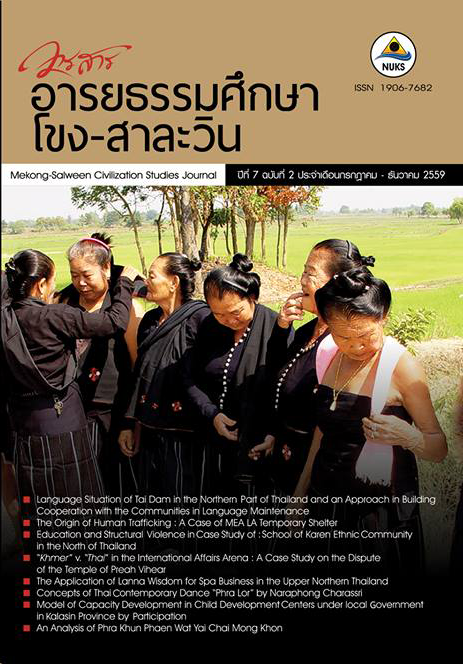An Analysis of Phra Khun Phaen Wat Yai Chai Mong Khon
Main Article Content
Abstract
King Naresuan the Great ordered the construction of a great
pagoda at Wat Yai Chai Mong Khon to commemorate the Yutthahatthi
battle. Later, in 1592, King Naresuan made Phra Khun Phaen Kleub for
worshipping, propagating Buddhism and conferring to soldiers as amulets
against dangers from enemies’ weapons. Since battles were frequently
engaged in those days, King Naresuan asked Somdej Phra Phonnarat, the
King’s own teacher, to act as the religious head and preside over the
making and consecrating ceremony of Phra Khun Phaen Kleub. After the
ceremony, when the amulets had been given to the royal family members
and courtiers, the King ordered that the remaining amulets be contained
in the pagoda at Wat Yai Chai Mong Khon, presumably to be conserved
as cultural heritage for later generations. There were several molds of
Phra Khun Phaen, 3 of which were important in that they were related
to King Naresuan the Great and found at the same spot in the pagoda of
Wat Yai Chai Mong Khon: Phra Khun Phaen Kleub, Phra Khun Phaen Khaen
On, and Phra Khun Phaen Bai Phutsa. At present, Phra Khun Phaen Kleub
is a popular mold among collectors of Buddhist amulets as they are
known for their power for protection from dangers and blessing of fortune
and favor to the carriers. This research, Therefore,aimed to analyse the
reasons for the making of the amulets, the components of the
amulets, the characteristics and the perceived benefits of the
amulets, reflected thr wisdom of Thai people in the past as well
as the beliefs and values to the making of amulets.


